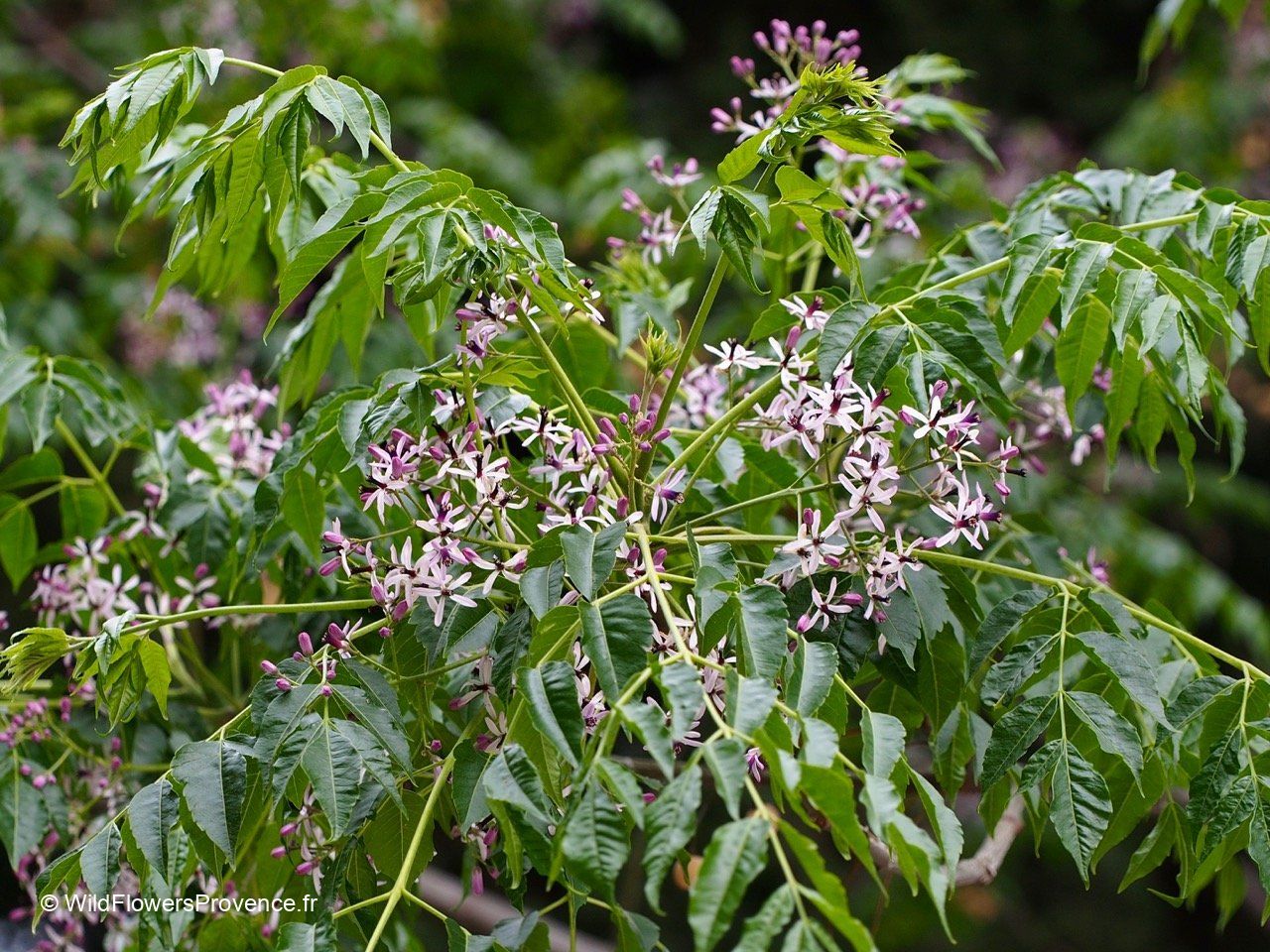Welcome to your holistic living

Botanical Name: Melia azadarach
Family: Meliaceae
English Name: Indian lilac, Persian lilac, Bead tree
Malayalam Name: Malaveppu
Hindi Name: Bakain
It has antibacterial, antifungal, and insecticidal properties. Leaves are used in treating skin diseases, ulcers, and fever. Treats bacterial and fungal infections Wound Healing: Paste made from leaves and bark is used to heal wounds Bark has Astringent taste, it has anthelmintic property. Fruits & Seeds are used as a purgative and insect repellent Liver Health: Aids in detoxification and supports liver function. 1.Leaves are stimulant of liver. Its bark decoction with honey is useful in jaundice, anorexia, vomiting, dysentery, intestinal worms, liver diseases. Ointment prepared from seeds is applied in piles. 2.Respiratory system : Its property of tikta reduces the kapha from respiratory passage. Leaves are more useful in excessive mucous secretion, Bark decoction is used in chronic cough. 30- 60 cc of liquid collected from the trunk is given in TB. 3.Urinary system : It is effective in diabetes. 4.Reproductive system : its seed uterine stimulant. Seed powder is used in dysmenorrheal. Continuous use of leaves leads to a decrease in the shukradhatus. it is a uterine Ionic. Since it is excreted in human milk, it is useful in preventing cough and skin diseases in infants. 5.Skin : It is useful in all skin conditions specially in burning sensation. 6.Temperature : Antipyretic. useful in chronic kaphajwara. malarial fever & fever. 7.Eyes : Tender leaves anti flowers are useful in many skin disorders, 8.Used in curing numerous ailments like piles, skin diseases, mouth ulcers, dandruff, gout, inflammation and so on. 9.Seeds are used in treating piles whereas leaves are used in relieving moth ulcers, gum problems and bad breath. Botanical Description: A medium-sized deciduous tree that grows to a height of 30–60 feet. Leaves are Dark green, alternate, bipinnate compound leaves with serrated edges. Flowers: Small, pale purple colored Fruits: Small, round, yellowish when ripe. Bark: Greyish -brown, rough with fissures
Leaves, bark, fruits, seeds and roots
1. Antimicrobial & Antifungal: Extracts from the leaves and bark show inhibitory effects against pathogens, treating bacterial and fungal infections, and skin issues like itch and scabies. 2. Anti-inflammatory & Pain Relief: The plant is used topically as a poultice for neuralgia and nervous headaches, and internally for pain and inflammation. 3. Respiratory Support: The leaves are useful for excessive mucous secretion and treating coughs, while flower and leaf poultices can reduce asthmatic attack intensity. 4. Liver & Detoxification: Decoctions of bark are used for liver diseases and jaundice, suggesting detoxifying properties. 5. Insect & Mosquito Repellent: Leaves are traditionally used to repel mosquitoes and other insects, and to protect stored grains from infestation. 6. Antiparasitic: The bark, leaves, and especially the fruits and seeds have been used as purgatives to expel intestinal worms and ascarides. 7. Fever Reducer: The plant has antipyretic properties and is used to treat various fevers, including malarial fever.
Grahi, Arshogna, Kasahara, Kushthaghna, Jwaraghna, Vranashodhana, Krimighna
Rasa: Katu, Tikta, Katu
Guna: Laghu, Ruksha
Virya: Sita
Vipaka: Katu
Dosha Karma: Kaphapitta shamaka